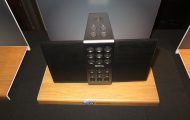Articles
Sony unveils ‘Dick Tracy’ Android wristwatch
Sony unveils the SmartWatch, syncs with Android phones | News.com.au
From the horse’s mouth
My Comments
Since the late 1970s, some Japanese firms like Seiko and Casio introduced multi-function digital wristwatches. These typically had an integrated calendar, alarm clock and stopwatch as well as the time display with a seconds count; and showed this information on a liquid-crystal display. There were some economy models that came with just a time display and a calendar.
Infact, through 1980-81, these were a “must-have” and people could impress each other by showing that new digital watch they had bought. They would even step their watch through the functions that it could do.
Through the 80s, manufacturers gradually added extra functions to these watches such as hourly chimes, musical alarms, phonebooks, four-function calculators and even games as a way of differentiating their product. This trend started to peel off through the 1990s due to various factors such as an effective “innovation ceiling” for this product class as well as the mobile phone becoming a commodity.
Even now, the smartphone has displaced the wristwatch as a personal timepiece, with some people wearing a quartz analogue watch as a “dress watch” or not using a watch at all. This is due to the smartphone implementing a clock that works off an Internet-based or mobile-network-based master clock and setting up for daylight-saving automatically. They also have the same functionality as the most tricked-out 1980s-era digital wristwatch, if not more.
There have been a few attempts at implementing a digital watch that works as a remote terminal for a smartphone but Sony have released the latest in the form of the “Smart Watch”.
This is an Android-powered wristwatch that is paired with an Android smartphone using Bluetooth technology. The phone runs a special communications app that allows it to be a display and control surface for that phone. You control this watch using its OLED touchscreen rather than pressing one of the buttons on the side of those watches, There is the ability to upload apps to the watch via the communications app so you have the right functions on your wrist.
At the moment, there needs to be work done on providing a level playing field for data communications between smartphones or similar devices and remote-display devices like these watches. Devices like watches would also need to keep the time independently of the phone when they are offline from that phone so they can do what a watch does best.
This could become an interesting return to the watch just like what has happened in the 1980s where the desire for many functions on your wrist made this accessory earn its utility value rather than fashion value.



